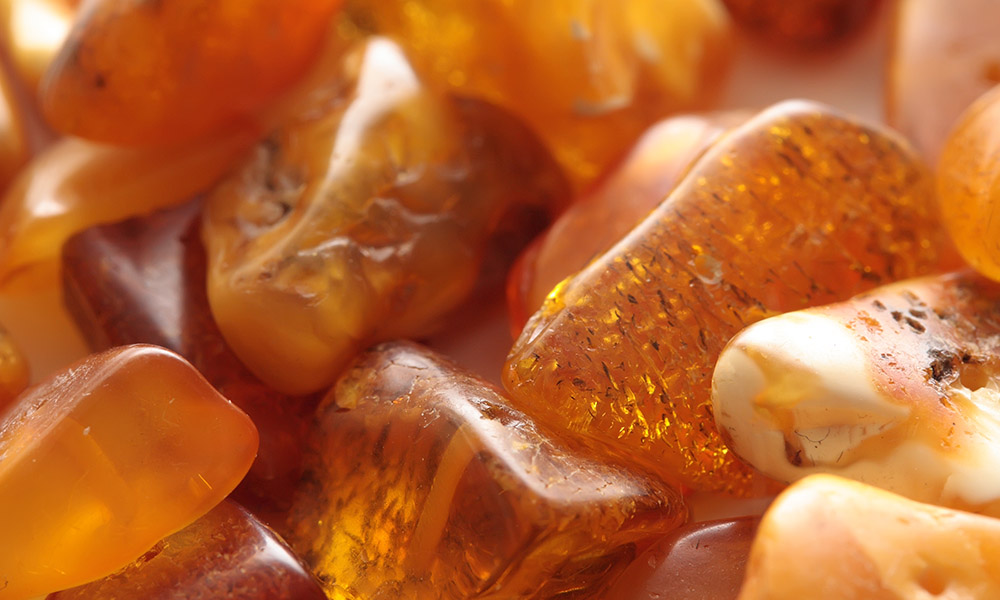Magical Gamut of Nature - What Kind of Amber Is It?
Amber, often referred to as "nature’s gemstone," is a captivating natural resin that has intrigued humanity for thousands of years. Known for its warm hues and unique properties, amber is not only valued for its beauty but also for its rich history and cultural significance. In this article, we will explore the different types of amber, their characteristics, and the magical qualities that make them so cherished.
What is Amber?
Amber is a fossilized tree resin that has undergone a natural polymerization process over millions of years. Formed primarily from the resin of coniferous trees, amber can contain traces of ancient life, making it a fascinating subject for both scientists and collectors alike. Historically, amber has been used in jewelry, amulets, and traditional medicine, valued not only for its aesthetic appeal but also for its purported healing properties.
Types of Amber
Baltic Amber
Baltic amber is one of the most well-known types, renowned for its vibrant yellow and orange hues. Originating from the Baltic Sea region, this amber often contains inclusions such as plant material and insects, which can provide insight into ancient ecosystems. Its historical context dates back to the Stone Age, where it was used for trade and jewelry-making, solidifying its place in European culture.
Dominican Amber
Dominican amber is celebrated for its clarity and range of colors, including shades of blue and green. This amber is often clear, allowing for stunning visual effects, and is famous for preserving a variety of inclusions. Many of these inclusions are crucial for scientific research, offering a glimpse into the biodiversity of the past. The Dominican Republic's unique geology contributes to the distinct properties of this amber.
Mexican Amber
Mexican amber is known for its rich color variations, ranging from deep yellow to reddish hues. This amber is not only used in jewelry but also plays a significant role in local culture, often featured in traditional crafts. The rich history of amber mining in Mexico has made it a valuable resource for artisans and collectors alike.
Burmese Amber
Burmese amber, particularly valued for its distinctive qualities, showcases a variety of colors and often includes rare inclusions such as lizards and flowers. Its historical importance dates back to ancient trade routes, connecting cultures and economies. Today, Burmese amber is highly sought after in the collector’s market.
Other Varieties
While Baltic, Dominican, Mexican, and Burmese ambers are the most recognized, there are other notable varieties, such as Canadian amber and Copal. Each type possesses unique characteristics that contribute to its charm and allure.
Color Variations in Amber
Amber is celebrated for its captivating color palette, which includes yellow, green, blue, and even black. The variations in color can affect both the value and desirability of the amber. For instance, deep blue amber is particularly rare and commands a higher price. Culturally, different colors of amber can symbolize various meanings; for example, yellow amber is often associated with warmth and positivity, while darker tones may evoke feelings of sophistication.
Inclusions in Amber
Inclusions are one of the most intriguing aspects of amber, often comprising ancient insects, plant materials, and bubbles of air. These inclusions not only enhance the aesthetic value of amber but also provide invaluable information for scientific research, helping to understand the ecosystems of ancient times. The presence of inclusions can significantly influence the amber's market value, with specimens containing well-preserved insects often fetching higher prices.
The Value of Amber
Several factors influence the price of amber, including its type, color, clarity, and the presence of inclusions. Market trends can shift based on demand, rarity, and the popularity of certain styles in jewelry. Collectors are increasingly interested in unique specimens, driving up the value of high-quality amber. Understanding these factors is essential for anyone looking to invest in or collect amber.
Amber is not just a beautiful gemstone; it is a window into the past, capturing the magical gamut of nature. With its diverse types and characteristics, amber continues to enchant people around the world. Whether as a collector's item, a piece of jewelry, or a scientific specimen, amber invites us to explore its rich history and the natural wonders it embodies. Dive into the world of amber and discover the unique stories each piece has to tell!
|



